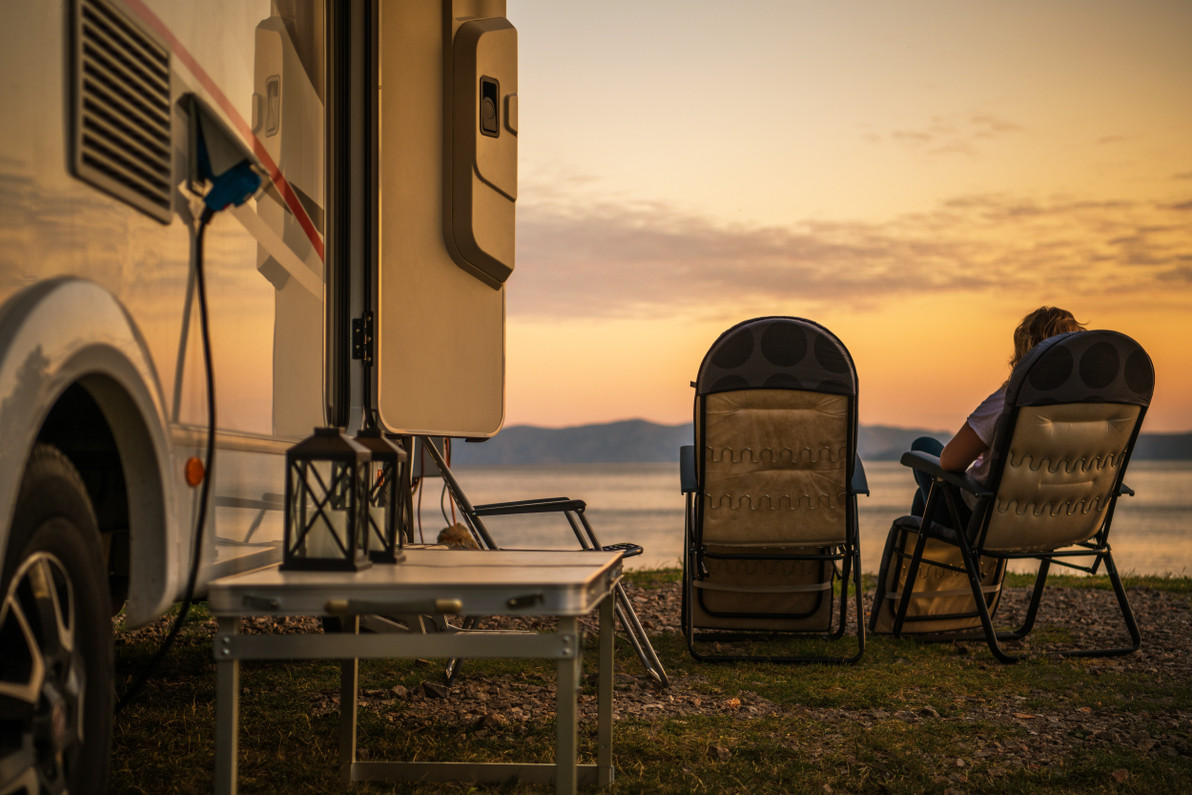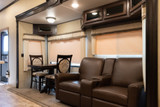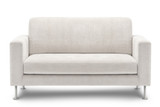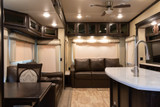How to Secure your RV Furniture
One of the big concerns when adding new RV furniture is how it will be secured inside of the RV. This concern goes past the furniture, too. With unsecured furniture and other items in the rig, you could have a lot of problems. You could deal with breakage, drawers flying open or spilling their contents, foods falling out, messes, crumpled clothing, and even more frustrating issues. Of course, anything stored in your RV will end up being subjected to the rigors of the road, from potholes to uneven roads and paths. While this will shake them around a bit, it’s best if they don’t completely get out of place. Luckily, there are a good many ways to secure your furniture as well as other items in your RV.
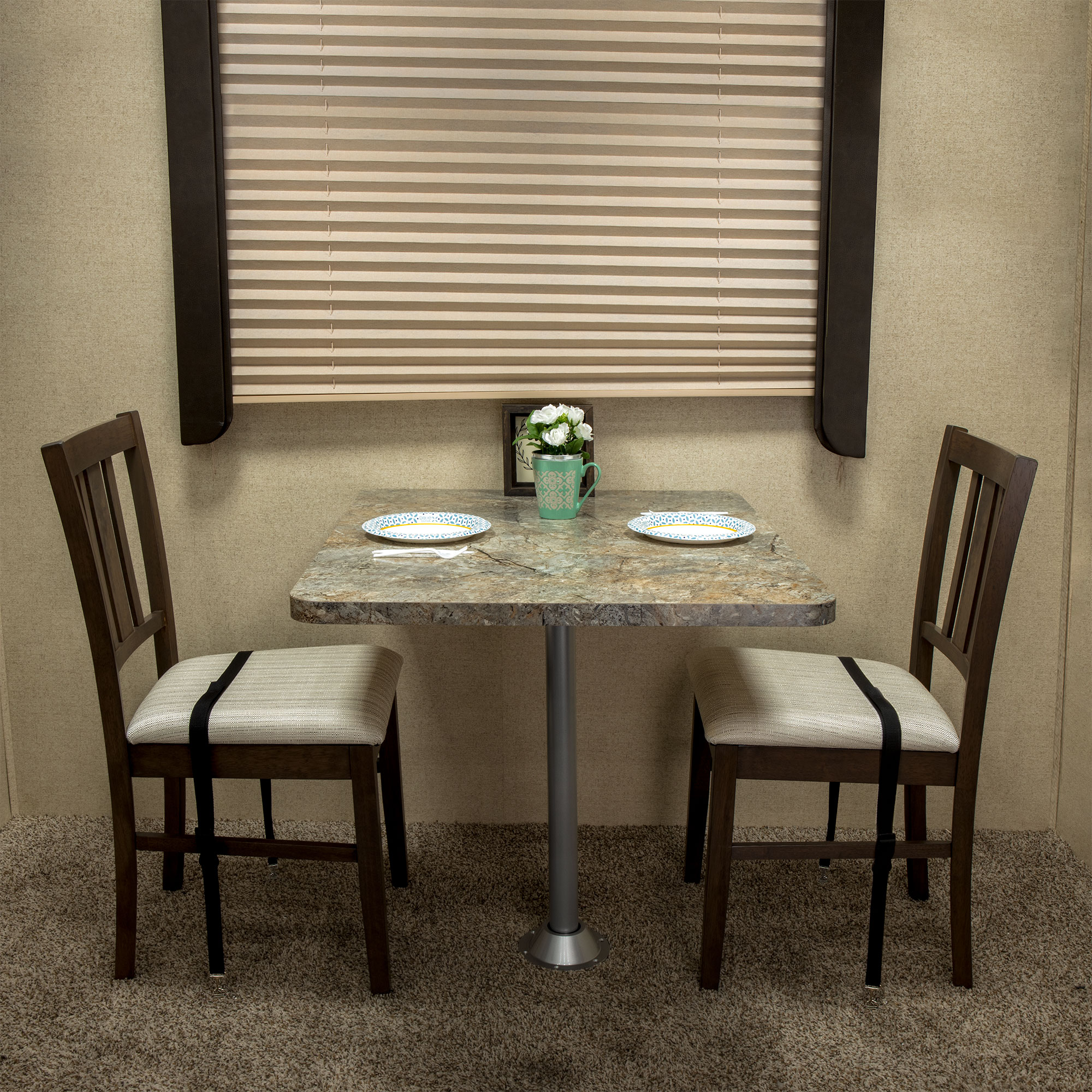
Securing your RV Furniture
When you’re looking to keep your furniture from moving around, there are a few things you can do. You could bolt them down. This is a more permanent option and is often more difficult to do. If you love your furniture and you’re willing to keep it in the same position for the life of the piece, then bolting it down might be a good idea. You have to be careful, though; you need to know what’s underneath the floor first. There could be water tanks, electrical wires, or other moving parts down there and you don’t want to damage anything. For this reason, it’s a good idea to either consult the RV manufacturer or an RV technician, or take a look around your RV and make perfectly certain that the bolts will not damage anything that may be under the floor. Either way you do it, though, understand that bolting the furniture down is a permanent solution, one that you should be certain of before committing to it.
There are temporary solutions as well, mainly D-bolts plus bungee cords or velcro. For keeping full furniture pieces in place, you can attach D-ring bolts to the floor or walls of your rig with enough room around them for the bungee cord. You can use the standard single bungee cords to hold the recliner or other furniture piece down or you could also use a bungee cord net. For this option, make sure that the bolts holding down the D-ring bolt are not hitting anything under the floor, just as you would for bolting the furniture down. For smaller pieces or cushions, you can use velcro. This is a relatively non-invasive way of securing those loose furniture pieces inside of your RV. You can secure it to the back of the seat cushions to keep them from moving around. You could stick one side to the side of a loose table top and the other side to the floor area where you would store it when moving around. This way, it can stay put when you’re on the road. Once you get to your destination, you can remove them easily. These options are great for those times when you might want to rearrange your furniture like you would at your stationary home.
Securing Other Items in your RV
There are a ton of other items in your RV that can move around when you’re driving the rig, from the items in your fridge to the things in your cabinets. While there are a few basic things you can do, including installing latches on every door and securely packing the bags and boxes, there are other things that are specific to the area you are securing. To make it easier to find just what you need, we’ve compiled a list.
- Cabinets and drawers: Pack items close together and line the cabinets with grip sheets or matting. This helps things stay in place, even when they’re not in a container. Try and put everything that is loose into a container or bag. Once closed, make sure all the drawers and doors are securely latched closed. If a latch breaks, replace it as soon as possible. If you can’t get the latch in time, try pushing something up against the door until you can get the piece you need.
- Medicine cabinets and cosmetics: Medicine and cosmetics are famous for getting everywhere, from open bottles to cracked items. To help keep them secure, try to pack them close together, line the shelves with non-slip matting, use small, expandable rods to keep larger things in place, and wrap towels in between the various items. This will not only keep them in place, but also keep them from breaking or spilling.
- Refrigerator: If you have a fridge in your rig, you’ll need to make sure the food inside is secure before moving. It might not spill out of the fridge while in transit, but it could make for one frustrating discovery when you open the fridge door. To keep things in place, use refrigerator bars and place food strategically in the fridge. Pack the items close together and place liquids in the door or at the very bottom. Place everything possible into plastic containers (not glass) and make sure the door is securely closed.
- Clothing: The first step in keeping your clothes secure is packing them well. Keep them close together and use lockable travel straps to keep them even more stable. Because clothing isn’t as fragile, you won’t have as much to worry about if something falls. To keep it from falling, though, the key simply lies in packing them tight and keeping them from moving too much.
- Counters: This might sound odd, but you don’t really need to completely clear off your counter before leaving. That is, if you’ve taken the proper precautions. If you apply heavy-duty non-slip pads to the top of the counter, then you can keep small items there while traveling (those items still need to be on their side or otherwise kept from rolling or tipping over, though). You can even use the pad on your table to keep things like napkins, containers, and other smaller items there while moving.
- Windows: Windows are not as often addressed when thinking about securing your items, but having a window open while you’re on the road can cause quite a lot of damage, both to the window and to the inside of your rig. If the lock on your RV window isn’t working properly or keeps coming undone, you can use a small dowel rod to keep the window closed. This can also keep out any unwelcome guests while you’re at the campground. Before you leave the site or your home, though, make sure that everything is secured, even your windows.
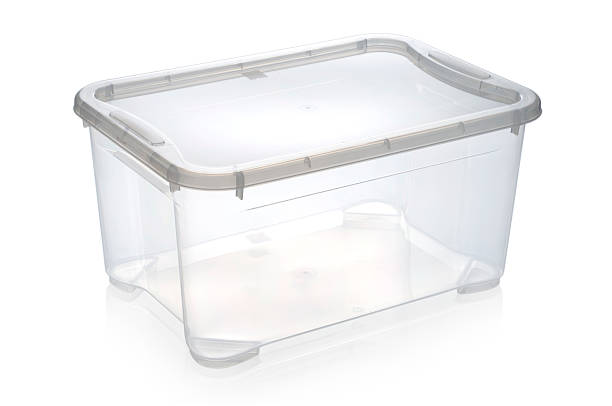
Driving an RV down the highways, back roads, and various landscapes of this country can be an enjoyable and amazing experience, but if you’re not careful, it can cause quite a bit of trouble. To prevent yourself from having to experience that trouble, make sure everything is safe and sound before you leave.
Recent Posts
-
How to Keep Your Pets Safe While Camping
RVing and camping are a great getaway from the hustle and bustle of work and the city and the day-to …Jul 2nd 2024 -
Why Replace Your RV Furniture?
You may wonder when is the best time to replace your RV furniture. There is no one right answer to t …May 20th 2024 -
Can You Put Regular Furniture in an RV?
Many new and old RV owners ask themselves this question when they feel the need to update th …Apr 25th 2024 -
4 Tips for Securing RV Furniture While Traveling | RecPro
How To Secure RV Furniture There are few things that beat going out on an adventure with an RV …Apr 25th 2024 -
How To Keep RV Furniture From Peeling
Peeling RV Furniture | Why it Peels and How to Stop it Your RV furniture is a point of pride on yo …Apr 25th 2024 -
Turning up the Heat With an RV Fireplace
There’s an unlimited number of cool and exciting features you could add to your recreational vehicle …Apr 25th 2024

